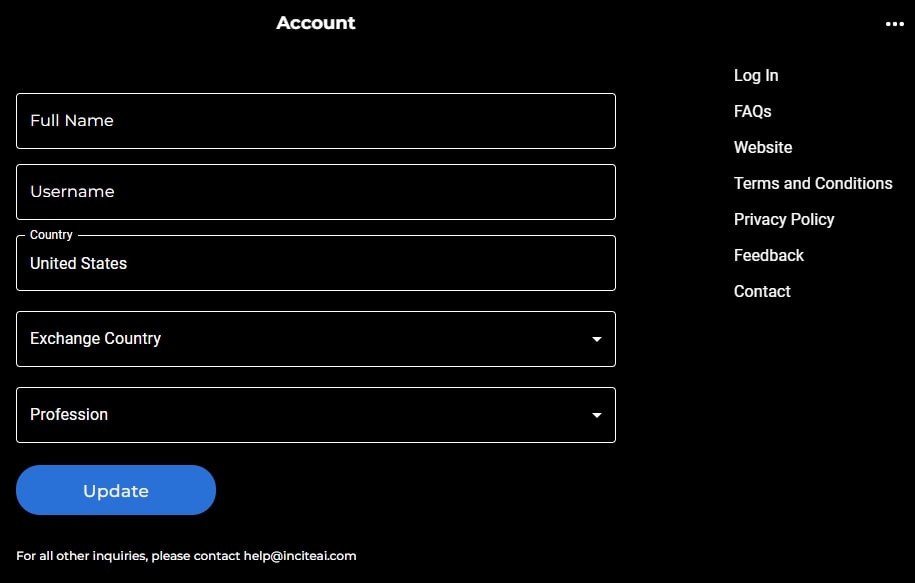20 Good Tips On Choosing AI Stock Investing Platform Sites
20 Good Tips On Choosing AI Stock Investing Platform Sites
Blog Article
Top 10 Tips To Determine The Quality Of The Data And Its Sources For Ai-Powered Stock Analysis And Forecasting Trading Platforms
To provide accurate and reliable data It is crucial to examine the data and sources that are utilized by AI stock prediction and trading platforms. Poor data can lead to inaccurate predictions, financial losses and mistrust of the system. Here are 10 methods to assess the quality of data and its source:
1. Verify data sources
Check the source: Make sure that the platform is using data from reliable sources (e.g. Bloomberg, Reuters Morningstar or exchanges such as NYSE and NASDAQ).
Transparency. The platform should be transparent about the sources of data it uses and should update these regularly.
Avoid dependency from a single source: Reliable platforms usually combine data from several sources to reduce the chance of errors and bias.
2. Assess Data Frischness
Real-time data vs. delayed data Find out if the platform offers delayed or real-time data. Real-time trading requires real-time data. Delayed data is enough for long-term analysis.
Update frequency: Check when the information is up to date.
Data accuracy of the past Verify that the data is uniform and free of anomalies or gaps.
3. Evaluate Data Completeness
Look for missing data: Look for gaps in data from the past as well as tickers that are not working or insufficient financial statements.
Coverage - Make sure the platform you select is able to cover all stocks, indices and markets that are relevant to your trading strategy.
Corporate actions: Check that your platform can be able to account for splits in stock or dividends. Also, verify if it can account for mergers.
4. Test Data Accuracy
Cross-verify your information: Verify the platform's data against other trusted sources.
Error detection: Watch out for incorrect pricing, mismatched financial metrics, or other outliers.
Backtesting. Make use of old data to test your trading strategy and determine whether it is in line with expectations.
5. Measure Data Granularity
In terms of level of detail, make sure that the platform can provide a full set of data, including intraday pricing quantity, bidding-asking spreads and depth of the order book.
Financial metrics - See if there are detailed financial statement (income statements and balance sheets, as well as cash flows) and key ratios included (P/E/P/B/ROE etc.). ).
6. Verify that the Data is Clean and Preprocessing
Normalization of data: Make sure the platform normalizes data (e.g., adjusting for dividends, splits) to ensure that the data remains consistent.
Outlier handling: See how the platform handles outliers or anomalies within the data.
Missing data imputation - Check that the platform is using solid methods to fill in missing data points.
7. Check for Data Consistency
Data alignment to the time zone: To avoid any discrepancies, ensure that the data in all files is synced with each other.
Format consistency: Verify that the data is presented consistently (e.g. units, currency).
Cross-market uniformity: Make sure that the data from various exchanges or markets is consistent.
8. Assess Data Relevance
Relevance in your trading strategy. Check that the information aligns to your trading style.
Selecting Features: Check if the platform provides relevant features, such as economic indicators, sentiment analysis as well as news data that will enhance predictions.
9. Review Data Security and Integrity
Data encryption - Make sure that your system is using encryption to protect the data when it is transferred and stored.
Tamper-proofing (proof against alteration): Check to make sure that the information was not altered or manipulated by the computer.
Make sure that the platform should be compliant with laws on data protection.
10. Test the Platform's AI Model Transparency
Explainability: Ensure that the platform gives you insights on the AI model's use of data to make predictions.
Bias detection: Determine if the platform actively monitors, and mitigates, biases in the data or models.
Performance metrics: Examine the platform's track record and the performance metrics (e.g. accuracy and precision, recall) to assess the reliability of its predictions.
Bonus Tips
User reviews and reputation Review user feedback and reviews to gauge the reliability of the platform and its data quality.
Trial period: Test the platform free of charge to test the functionality and what features are available before you commit.
Support for customers: Make sure that the platform offers a robust customer service to help with data-related questions.
The following tips can assist you in assessing the data sources and quality of AI software for stock predictions. You'll be able to make reliable and informed decisions about trading. View the best good about investing ai for website tips including ai for investment, best ai for trading, chatgpt copyright, ai stock, incite, best ai stock trading bot free, chatgpt copyright, investing ai, ai investment app, chart ai trading assistant and more.
Top 10 Tips For Evaluating The Scalability Ai Trading Platforms
To ensure that AI-driven prediction and trading platforms can handle the increasing amount of data, user requests and market complexity, it is essential to evaluate their capacity. These are the top 10 suggestions to evaluate the scalability of AI-driven stock prediction and trading platforms.
1. Evaluate Data Handling Capacity
Tip: Make sure the platform you're considering is able to handle and analyze large data sets.
Why? Scalable systems have to manage data volumes that are growing without performance degradation.
2. Check out real-time processing capabilities
Tip: Assess how well the platform processes real-time data streams, for example, live stock prices, or breaking news.
Why: Delays in trading decisions can lead to missed opportunities.
3. Cloud Infrastructure and Elasticity Cloud Infrastructure and Elasticity: Take a look
Tip. Determine whether the platform is using cloud-based infrastructure, such as AWS, Google Cloud and Azure that can increase the capacity of resources as needed.
Why cloud platforms are so popular: They provide flexibility, allowing systems to scale up or down based on demand.
4. Algorithm Efficiency
Tip 1: Evaluate the computational efficiency of the AI models that are being utilized (e.g. reinforcement learning deep learning, etc.).
Why: Complex algorithms require a lot of resources. So, optimizing them will help you scale.
5. Investigate Parallel Processing and distributed computing
TIP: Find out if the platform leverages parallel processing or distributed computing frameworks (e.g., Apache Spark, Hadoop).
Why: These technologies allow more efficient data processing and analysis across multiple nodes.
6. Examine API Integration and Interoperability
Tip : Make sure the platform is compatible with other APIs, like market data providers or brokerage APIs.
The reason: seamless integration means that the platform is adaptable to new information sources and environments for trading.
7. Analyze User Load Handling
Try simulating high traffic volumes to test how your platform will perform.
Why: A platform that can scale should be able to sustain performance as the number users grow.
8. Examine the model's retraining capabilities and adjustability
Tips: Check how often and efficiently AI models are being retrained using new data.
The reason is that markets change and models need to be able to adapt rapidly to keep their precision.
9. Check for Fault Tolerance & Redundancy
Tip - Make sure that your system has redundancy and failover mechanisms for handling hardware or other software failures.
What's the reason? Trading downtime can be expensive, and fault tolerence is important to ensure scaling.
10. Monitor Cost Efficiency
Tip: Calculate the costs of the expansion of your platform. Incorporate cloud resources, storage for data and computational power.
Why: Scalability should not result in an unsustainable price, so balancing performance and expense is essential.
Bonus Tip: Future-Proofing
ensuring that the platform will be able to adapt to new technologies (e.g. advanced NLP, quantum computing) and regulatory changes.
These elements can assist you in assessing the impact of AI-based stock prediction systems and trading platforms. They will also ensure they're robust, efficient and ready to expand, and are future-proof. Take a look at the top rated ai investment tools blog for site advice including best ai for stock trading, how to use ai for copyright trading, how to use ai for copyright trading, best ai stock prediction, stocks ai, can ai predict stock market, ai stock predictions, ai copyright signals, chart analysis ai, invest ai and more.